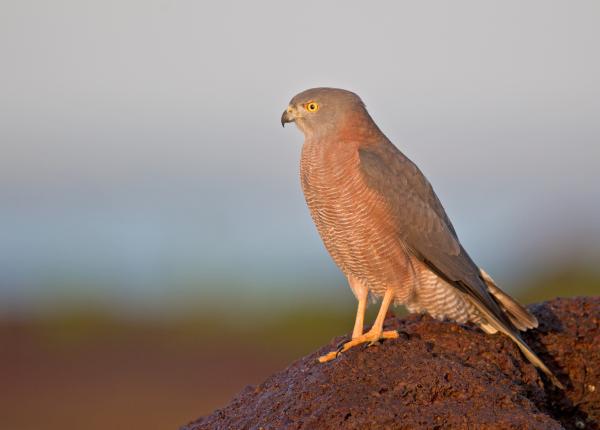Did You Know?
- This species has a few other names including Australian Chestnut-collared Goshawk, Gray-headed Goshawk, and Western Goshawk, to name a few.
- There are eleven recognized sub-species of the Brown Goshawk
How The Peregrine Fund is Helping
Though The Peregrine Fund doesn't work directly with Variable Goshawks, our efforts in scientific research, habitat conservation, education, and community development help conserve birds of prey around the world. We also supply literature to researchers from our avian research library, which helps scientists around the world gather and share important information on raptor conservation. We also run the Global Raptor Impact Network which gives raptor researchers tools to more efficiently conduct their own studies while contributing to a global program. GRIN also provides citizen scientists a way to participate in raptor science and conservation.
Where it Lives
The Brown Goshawk inhabits a mosaic of different habitats including monsoon forest, woodland, forest edge, savanna, and wooded farmlands and urban landscapes. It isn't generally found in dense forests or areas with few or no trees.
What it Does
According to researchers, these birds can be quite shy and, for this reason, are very rarely observed. With one exception. The population on Christmas Island is reputedly quite tame, and birds are said to follow people as they walk in the forest. This bird also does soar sometimes so if you find yourself in Brown Goshawk territory, be sure to look up!
Why it Needs our Help
This Brown Goshawk is categorized as a species of Least Concern. It is considered to be quite common and widespread throughout its range. However, habitat loss threatens the future of this species. Also, researchers have documented some nest failures due to tropical thunderstorms.
What it Eats
Like many other raptors, the Brown Goshawk has quite a varied diet. It catches mammals, such as rabbits, birds of all sizes, including Cattle Egret, White-faced Heron, and Grey Teal, among many others. They also consume reptiles, amphibians, arthropods, and occasionally carrion. When on the hunt, it will pounce on prey from a concealed perch or chase it in flight. It is also known to stalk insects on the ground
Nests, Eggs, and Young
The pair will build a small platform nest of sticks lined with green leaves, which they place between 2 and 36 m off the ground in the fork of a living tree. The female will usually lay 3 eggs, which may be bluish-white or have reddish-brown spotting. When the nestlings hatch, they are covered in a fluffy white down. When they are between 28 and 37 days old, they will be ready to fly from the nest for the first time. But they will remain with their parents for up to six weeks as they learn to hunt, avoid danger, and otherwise survive.
Brown Goshawk and the World Center for Birds of Prey
The World Center for Birds of Prey offers fun ways to learn about birds of prey. Interactive activities, tours, interesting videos and a children's room with activities from coloring sheets to quizzes to costumes and a touch table are available for the curious mind. We also have several birds of prey on display year-around. Knowledgeable staff and volunteers are on hand to answer any questions you may have about Brown Goshawks or any other birds of prey.
References:
Debus, S., J. S. Marks, and P. F. D. Boesman (2020). Brown Goshawk (Accipiter fasciatus), version 1.0. In Birds of the World (J. del Hoyo, A. Elliott, J. Sargatal, D. A. Christie, and E. de Juana, Editors). Cornell Lab of Ornithology, Ithaca, NY, USA. https://doi.org/10.2173/bow.brogos1.01
Global Raptor Information Network. 2022. Species account: Brown Goshawk Accipiter fasciatus. Downloaded from http://www.globalraptors.org on 27 Sep. 2022









